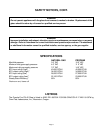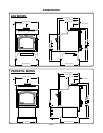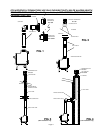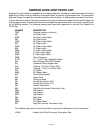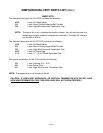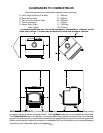Page 10
PLANNING YOUR INSTALLATION
There are four types of direct vent system installations approved for use with the DV40 Step. It is very
important to maintain a balance between the combustion air intake and the flue gas exhaust venting
system. The types of installation are:
Horizontal Termination (Figure 1, Pg. 11) Vertical Termination (Figure 2, Pg. 11)
Into a Class A Metal Chimney (Figure 3, Pg. 11)* Into a Masonry Chimney (Figure 4, Pg. 11)*
*USA installations only
Note: Certain limitations as to vent and vertical termination configuration apply, and must be
strictly adhered to.
When planning your installation, it will be necessary to select the proper length of vent pipe for your
particular requirements. The vent graph on page 15 will show the relationship between vertical and
horizontal side wall venting, and will help to determine the various vent lengths permitted. It is also important
to note the wall thickness. Select the amount of vertical rise desired for “vertical-to-horizontal” type
installations. To determine the length of your pipe required for vertical installations, measure the distance
from the application flue outlet to the ceiling, the ceiling thickness, the vertical rise in an attic or second
story, and allow for sufficient vent height above the roofline. For two-story applications, fire stops are
required at each floor level. If an offset is needed in the attic, additional pipe and elbows will be required.
When determining the position of the stove, be sure to adhere to minimum clearance to combustibles to
the appliance itself. (See page 14.)
When installing this appliance into an existing masonry chimney, it is important to carefully measure the
length of flex needed to reach from the appliance outlet to the termination cap. If the flex length is too
short, a flex coupler will be needed to attach an additional length of flex liner to make up the difference. If
the flex length is too long, the liner could sag below the appliance outlet, which could result in an airflow
restriction causing flow reversal or flame lift.






